- Clone
- DREG-56 (See other available formats)
- Regulatory Status
- RUO
- Workshop
- V S056
- Other Names
- L-selectin, LECAM-1, LAM-1, Leu-8, TQ-1
- Isotype
- Mouse IgG1, κ
- Barcode Sequence
- GTCCCTGCAACTTGA
| Cat # | Size | Price | Quantity Check Availability | ||
|---|---|---|---|---|---|
| 304849 | 10 µg | $369.00 | |||
CD62L is a 74-95 kD single chain type I glycoprotein referred to as L-selectin or LECAM-1. It is expressed on most peripheral blood B cells, subsets of T and NK cells, monocytes, granulocytes, and certain hematopoietic malignant cells. CD62L binds to carbohydrates present on certain glycoforms of CD34, glycam-1, and MAdCAM-1 and with a low affinity to anionic oligosaccharide sequences related to sialylated Lewis X (sLex, CD15s) through its C-type lectin domain. CD62L is important for the homing of naïve lymphocytes to high endothelial venules in peripheral lymph nodes and Peyer's patches. It also plays a role in leukocyte rolling on activated endothelial cells.
Product Details
- Verified Reactivity
- Human
- Reported Reactivity
- Chimpanzee, Cow
- Antibody Type
- Monoclonal
- Host Species
- Mouse
- Immunogen
- Concentrated supernatant from PMA-activated human peripheral blood leukocytes
- Formulation
- Phosphate-buffered solution, pH 7.2, containing 0.09% sodium azide and EDTA
- Preparation
- The antibody was purified by chromatography and conjugated with TotalSeq™-B oligomer under optimal conditions.
- Concentration
- 0.5 mg/ml
- Storage & Handling
- The antibody solution should be stored undiluted between 2°C and 8°C. Do not freeze.
- Application
-
PG - Quality tested
- Recommended Usage
-
Each lot of this antibody is quality control tested by immunofluorescent staining with flow cytometric analysis and the oligomer sequence is confirmed by sequencing. TotalSeq™-B antibodies are compatible with 10x Genomics Single Cell Gene Expression Solutions.
To maximize performance, it is strongly recommended that the reagent be titrated for each application, and that you centrifuge the antibody dilution before adding to the cells at 14,000xg at 2 - 8°C for 10 minutes. Carefully pipette out the liquid avoiding the bottom of the tube and add to the cell suspension. For Proteogenomics analysis, the suggested starting amount of this reagent for titration is ≤ 1.0 µg per million cells in 100 µL volume. Refer to the corresponding TotalSeq™ protocol for specific staining instructions.
Buyer is solely responsible for determining whether Buyer has all intellectual property rights that are necessary for Buyer's intended uses of the BioLegend TotalSeq™ products. For example, for any technology platform Buyer uses with TotalSeq™, it is Buyer's sole responsibility to determine whether it has all necessary third party intellectual property rights to use that platform and TotalSeq™ with that platform. - Application Notes
-
Additional reported applications (for the relevant formats) include: Western blotting2,3,9 and in vitro blocking of lymphocytes binding to high endothelial venules (HEV)2. The Ultra-LEAF™ purified antibody (Endotoxin < 0.01 EU/µg, Azide-Free, 0.2 µm filtered) is recommended for functional assays (Cat. Nos. 304853-304858).
- Additional Product Notes
-
TotalSeq™ reagents are designed to profile protein levels at a single cell level following an optimized protocol similar to the CITE-seq workflow. A compatible single cell device (e.g. 10x Genomics Chromium System and Reagents) and sequencer (e.g. Illumina analyzers) are required. Please contact technical support for more information, or visit biolegend.com/totalseq.
The barcode flanking sequences are GTGACTGGAGTTCAGACGTGTGCTCTTCCGATCTNNNNNNNNNN (PCR handle), and NNNNNNNNNGCTTTAAGGCCGGTCCTAGC*A*A (capture sequence). N represents either randomly selected A, C, G, or T, and * indicates a phosphorothioated bond, to prevent nuclease degradation.
View more applications data for this product in our Scientific Poster Library. -
Application References
(PubMed link indicates BioLegend citation) -
- Schlossman S, et al. Eds. 1995. Leucocyte Typing V. Oxford University Press. New York.
- Kishimoto TK, et al. 1990. Proc. Natl. Acad. Sci. USA 87:2244. (WB, Block)
- Jutila M, et al. 2002. J. Immunol. 169:1768. (WB)
- Tamassia N, et al. 2008. J. Immunol. 181:6563. (FC) PubMed
- Kmieciak M, et al. 2009. J. Transl. Med. 7:89. (FC) PubMed
- Thakral D, et al. 2008. J. Immunol. 180:7431. (FC) PubMed
- Charles N, et al. 2010. Nat. Med. 16:701. (FC) PubMed
- Yoshino N, et al. 2000. Exp. Anim. (Tokyo) 49:97. (FC)
- Koenig JM, et al. 1996. Pediatr. Res. 39:616. (WB)
- Shi C, et al. 2011. J. Immunol. 187:5293. (FC) PubMed
- Burges M, et al. 2013. Clin Cancer Res. 19:5675. PubMed
- Cash JL, et al. 2013. EMBO Rep. 14:999. (FC) PubMed
- RRID
-
AB_2800769 (BioLegend Cat. No. 304849)
Antigen Details
- Structure
- Selectin, single chain glycoprotein, 74-95 kD
- Distribution
-
Majority of B cells, naïve T cells, subset of memory T and NK cells, monocytes, granulocytes, thymocytes
- Function
- Leukocyte homing, leukocyte tethering, rolling
- Ligand/Receptor
- CD34, GlyCAM, MAdCAM-1
- Cell Type
- B cells, Granulocytes, Monocytes, Neutrophils, NK cells, T cells, Thymocytes, Tregs
- Biology Area
- Cell Adhesion, Cell Biology, Costimulatory Molecules, Immunology, Innate Immunity
- Molecular Family
- Adhesion Molecules, CD Molecules
- Antigen References
-
- Kishimoto T, et al. 1990. P. Natl. Acad. Sci. USA 87:2244.
- Kishimoto T, et al. 1991. Blood 78:805.
- Gene ID
- 6402 View all products for this Gene ID
- UniProt
- View information about CD62L on UniProt.org
Other Formats
View All CD62L Reagents Request Custom ConjugationCompare Data Across All Formats
This data display is provided for general comparisons between formats.
Your actual data may vary due to variations in samples, target cells, instruments and their settings, staining conditions, and other factors.
If you need assistance with selecting the best format contact our expert technical support team.
-
APC anti-human CD62L
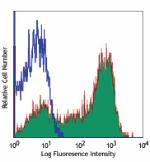
Human peripheral blood lymphocytes stained with DREG-56 APC -
FITC anti-human CD62L
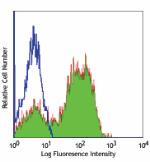
Human peripheral blood lymphocytes stained with DREG-56 FITC -
PE anti-human CD62L
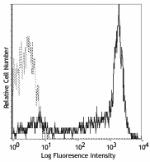
Human peripheral blood lymphocytes stained with DREG-56 PE -
PE/Cyanine5 anti-human CD62L
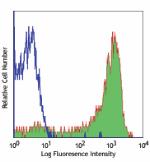
Human peripheral blood lymphocytes stained with DREG-56 PE/C... -
Purified anti-human CD62L

Human peripheral blood lymphocytes stained with purified DRE... -
APC/Cyanine7 anti-human CD62L
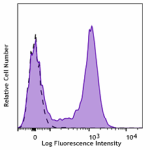
Human peripheral blood lymphocytes were stained with CD62L (... -
Alexa Fluor® 488 anti-human CD62L
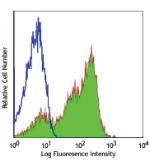
Human peripheral blood lymphocytes stained with DREG-56 Alex... -
Alexa Fluor® 647 anti-human CD62L
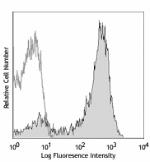
Human peripheral blood lymphocytes stained with DREG56 Alexa... -
Alexa Fluor® 700 anti-human CD62L
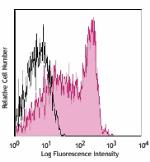
Human peripheral blood lymphocytes stained with DREG-56 Alex... -
PE/Cyanine7 anti-human CD62L
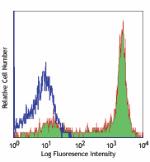
Human peripheral blood lymphocytes stained with DREG-56 PE/C... -
PerCP/Cyanine5.5 anti-human CD62L

Human peripheral blood lymphocytes were stained with CD62L (... -
Pacific Blue™ anti-human CD62L
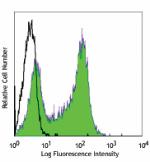
Human peripheral blood lymphocytes stained with DREG-56 Paci... -
Brilliant Violet 421™ anti-human CD62L
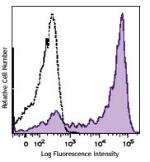
Human peripheral blood lymphocytes were stained with CD62L (... -
Brilliant Violet 785™ anti-human CD62L
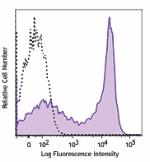
Human peripheral blood lymphocytes were stained with CD62L (... -
Brilliant Violet 650™ anti-human CD62L
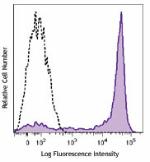
Human peripheral blood lymphocytes were stained with CD62L (... -
PE/Dazzle™ 594 anti-human CD62L
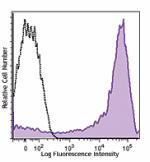
Human peripheral blood lymphocytes were stained with CD62L (... -
Brilliant Violet 605™ anti-human CD62L
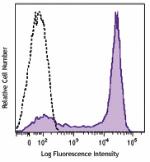
Human peripheral blood lymphocytes were stained with CD62L (... -
Purified anti-human CD62L (Maxpar® Ready)
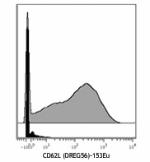
Human Jurkat T cells (top) and human NALM-6 pre-B cells (bot... -
APC/Fire™ 750 anti-human CD62L
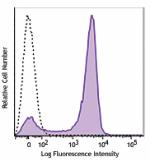
Human peripheral blood lymphocytes were stained with CD62L (... -
Brilliant Violet 510™ anti-human CD62L
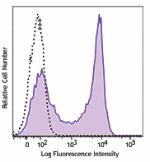
Human peripheral blood lymphocytes were stained with CD62L (... -
TotalSeq™-A0147 anti-human CD62L
-
TotalSeq™-B0147 anti-human CD62L
-
TotalSeq™-C0147 anti-human CD62L
-
Ultra-LEAF™ Purified anti-human CD62L
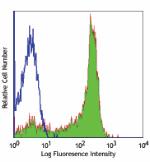
Human peripheral blood lymphocytes stained with Ultra-LEAF™ ... -
Brilliant Violet 711™ anti-human CD62L

Human peripheral blood lymphocytes were stained with CD62L (... -
Spark NIR™ 685 anti-human CD62L
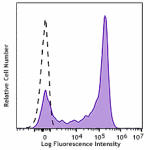
Human peripheral blood lymphocytes were stained with CD62L (... -
TotalSeq™-D0147 anti-human CD62L
-
APC/Fire™ 810 anti-human CD62L
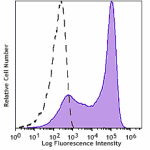
Human peripheral lymphocytes were stained with anti-human 62... -
FITC anti-human CD62L
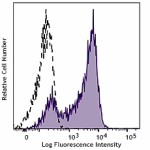
Typical results from Human peripheral blood lymphocytes stai... -
PE/Dazzle™ 594 anti-human CD62L
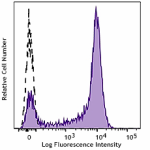
Typical results from human peripheral blood lymphocytes stai... -
PerCP/Fire™ 806 anti-human CD62L

Human peripheral blood lymphocytes were stained with anti-hu... -
APC anti-human CD62L
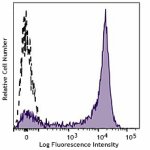
Typical result from human peripheral lymphocytes stained eit... -
GMP FITC anti-human CD62L
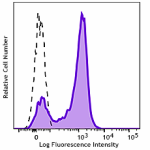
Typical results from Human peripheral blood lymphocytes stai... -
Biotin anti-human CD62L

Human peripheral blood mononuclear cells were stained with a... -
Spark Blue™ 574 anti-human CD62L (Flexi-Fluor™)
